CHAPTER < ELEVEN - HOLDING THE KEY CONTD...
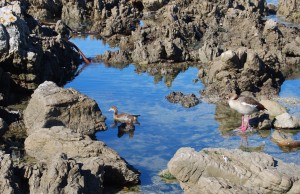 Thoreau wrote, “In wilderness is the preservation of the world”. But is the preservation of the wilderness and hence as Thoreau would have it, the world, purely the responsibility of dedicated pockets of Earth scientists and eco-warriors who have the foresight and technological expertise to attempt to solve the complex problems that lie before us? Or does the solution to the planet’s ecological problems lie with a far wider group than this? Perhaps biologist Dr George B. Schaller answered these questions when he wrote in his book Stones of Silence: “There is a tendency to think of ecological problems as scientific and technological when they are actually social and cultural”.
Thoreau wrote, “In wilderness is the preservation of the world”. But is the preservation of the wilderness and hence as Thoreau would have it, the world, purely the responsibility of dedicated pockets of Earth scientists and eco-warriors who have the foresight and technological expertise to attempt to solve the complex problems that lie before us? Or does the solution to the planet’s ecological problems lie with a far wider group than this? Perhaps biologist Dr George B. Schaller answered these questions when he wrote in his book Stones of Silence: “There is a tendency to think of ecological problems as scientific and technological when they are actually social and cultural”.
Because the major threat to the natural world lies with the overwhelming numbers of human beings who inhabit the planet, together with our ecologically damaging practices and unsustainable consumption levels of natural resources, it stands to reason that the solutions to environmental problems also lie with us. However it is not enough for us to see the problems without developing a deep commitment to solving them. It is not enough for us to review erroneous thinking patterns without replacing them with others that are more relevant to the realities of today’s and tomorrow’s world. It is not enough for us to undergo a renaissance of values without evolving a complete change of heart. And it is not enough for us to engage our minds with what needs to be done without progressing to a widespread call to arms.
His Holiness the 14th Dalai Lama has said, “Change only takes place through action”. Dreams, hopes, thoughts, beliefs, principles and decisions are so much empty air without action to follow them through. At the end of the day it is the taking of cumulative steps by each and every one of us, in an individual and combined effort that will accomplish the urgent goal of nature conservation, and with it, the preservation of our world.
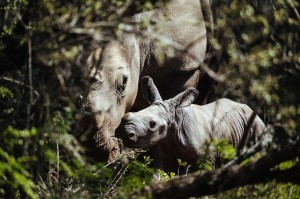 In a letter to the “Ride for the Rhino” girls, Julie Edwards and Charlene Hewat, following their visit to “Kampi ya Simba” in Kora National Reserve, George Adamson wrote, “I have always believed that it will be up to the young people of today to save the endangered wildlife of this world for the future”. With time running out, perhaps this is the most hopeful place for us to start.
In a letter to the “Ride for the Rhino” girls, Julie Edwards and Charlene Hewat, following their visit to “Kampi ya Simba” in Kora National Reserve, George Adamson wrote, “I have always believed that it will be up to the young people of today to save the endangered wildlife of this world for the future”. With time running out, perhaps this is the most hopeful place for us to start.
Hope With Youth
Regardless of where in the world they come from or the social strata that they inhabit, with each young person comes hope for the future. Because young people, with their excitement for life not yet bludgeoned to death by the negative reinforcement of a jaded world, see things with fresh eyes. Not yet world-weary enough to resist taking on challenges, they see opportunities where their elders tend to see only problems. They also see many possible solutions where older people sometimes see only one likely outcome. And their natural enthusiasm, as yet untainted by comparison with painful past experience, is like an old-fashioned steam train that has begun to gather momentum. Instead of hesitantly chugging its way around obstacles, losing steam in the process, or stopping short of its goal altogether, youthful enthusiasm is able to use its own momentum to blast its way through barriers.
Admittedly at the saddest end of the spectrum is a proportion of the world’s youth who have lost their way or fallen off the rails of life completely, which is an indication of young people under siege from the pressures of a civilisation in transition. However, in spite of what a sensationalist media would have us believe, the lost ones are in the minority.
 At the other end of the spectrum are enough young people, bursting with potential, to make a significant difference to the world. With their imagination and ingenuity, as well as their idealism and high hopes for the future still intact, each young person brings with them a unique combination of intelligence, gifts, talents, perspectives, personality traits, skills and experience to add to the global pool. This combination of ability and character is each person’s individual contribution to the universal collective and it is a resource of enormous consequence – because the greatest global resource is the human mind.
At the other end of the spectrum are enough young people, bursting with potential, to make a significant difference to the world. With their imagination and ingenuity, as well as their idealism and high hopes for the future still intact, each young person brings with them a unique combination of intelligence, gifts, talents, perspectives, personality traits, skills and experience to add to the global pool. This combination of ability and character is each person’s individual contribution to the universal collective and it is a resource of enormous consequence – because the greatest global resource is the human mind.
The Israeli Uri Geller was able to bend metal spoons merely by concentrating on them, and in a scientifically controlled experiment, a young American, Dean Kraft, was able to kill a particularly virulent form of cancer cells in a sealed culture flask while standing some distance away just by focusing his mental powers on the culture. With these and other powerful examples of extraordinary mind power, to what heights can human potential soar? The advanced capabilities of the human mind are able to take us far beyond the realm of what is traditionally considered possible, illustrating that the unexplored heights of human possibility could be infinite.
Another Way of Doing Things
Regardless of our planet’s overall clemency, without human ingenuity to utilise the gifts that the Earth has offered in the most intelligent manner possible, taking advantage of abundance where and when it was available, our stay on this planet would have been a short one indeed.
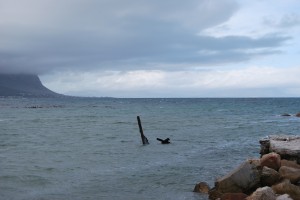 Climate and periods of inclement weather would have squeezed early humans into pockets of temperate terrains; with vast areas of inhospitable biomes such as hot, dry deserts, boggy tundra, windswept mountainous regions and frozen polar ice, remaining uninhabited. Food sources would have been limited to what could be found on the ground, picked from trees or scavenged from the kills of predatory animals, making ancestral people vulnerable to climatic uncertainties and over-gathering. Without the means to protect themselves, early humans would themselves have been prey to predators. Shelters would have been caves and rock overhangs with prehistoric communities competing fiercely for these few protective sites. Injuries and diseases would have gone unhealed except for those that the body could heal itself. And migrations would have been limited to places they could travel to on foot, with catastrophic natural occurrences such as droughts, floods, mudslides, volcanoes and earthquakes taking a heavy toll on ancestral people.
Climate and periods of inclement weather would have squeezed early humans into pockets of temperate terrains; with vast areas of inhospitable biomes such as hot, dry deserts, boggy tundra, windswept mountainous regions and frozen polar ice, remaining uninhabited. Food sources would have been limited to what could be found on the ground, picked from trees or scavenged from the kills of predatory animals, making ancestral people vulnerable to climatic uncertainties and over-gathering. Without the means to protect themselves, early humans would themselves have been prey to predators. Shelters would have been caves and rock overhangs with prehistoric communities competing fiercely for these few protective sites. Injuries and diseases would have gone unhealed except for those that the body could heal itself. And migrations would have been limited to places they could travel to on foot, with catastrophic natural occurrences such as droughts, floods, mudslides, volcanoes and earthquakes taking a heavy toll on ancestral people.
In short, prehistoric communities would have been limited by the carrying capacity of their environments. And without their own intervention making the extension of this carrying capacity possible, the growth and development of early humans would have been severely restricted within static environments, leading to the high natural extinction rates that modern biologists have found to occur in small, isolated habitats. Our stay on this planet has been possible not only through the availability of resources themselves, but primarily through our remarkable ability to develop technological innovations that have enabled us to harness the planet’s resources with continued success.
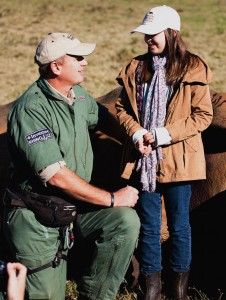 By building on the foundation laid down by the intelligence and experience of our ancestors, which has been passed from generation to generation, across a time span that has bridged thousands of millennia, as well as the gains achieved by the modern environmental movement; today’s young people with their heightened awareness, precocious curiosity, better education, fresh perspective, teeming energy, Information Age skills and optimistic outlook on life, hold the keys to solving the problems of the planet for the future.
By building on the foundation laid down by the intelligence and experience of our ancestors, which has been passed from generation to generation, across a time span that has bridged thousands of millennia, as well as the gains achieved by the modern environmental movement; today’s young people with their heightened awareness, precocious curiosity, better education, fresh perspective, teeming energy, Information Age skills and optimistic outlook on life, hold the keys to solving the problems of the planet for the future.
For with a far greater exposure to ecologically attuned print media, films and television documentaries than ever before, today’s young people are more environmentally aware than any previous generation. They have grown up with an acute sensitivity to the survival of planet Earth, closely identifying with issues such as global warming, thinning ozone, air and water pollution, burning rainforests and nuclear testing.
And with thanks to the influence of Dr Spock and a generation of baby-boomer parents who adopted the belief that their children should be both seen and heard: post World War Two parents who allowed their children to grow up with more freedom of thought, speech, behaviour and choice than they themselves had been allowed in their youth, today’s youngsters have become an important and outspoken force to be reckoned with. Adding their voice to the voices of countless others around the world who have declared a moratorium on global ecological and human destruction through whatever means possible.
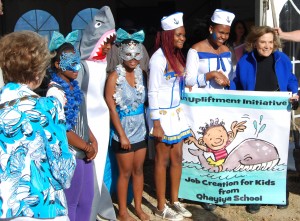 Today’s young people face a difficult legacy. It is probable that the compelling issue of global survival will hit closer to home with them than with any generation that has preceded them. Profound struggle could well be their heritage. But is this necessarily a bad thing? When all is said and done, perhaps struggle is good for the human psyche. For with difficulty comes the capacity to test weaknesses and build strength, gaining in goodness and grace.
Today’s young people face a difficult legacy. It is probable that the compelling issue of global survival will hit closer to home with them than with any generation that has preceded them. Profound struggle could well be their heritage. But is this necessarily a bad thing? When all is said and done, perhaps struggle is good for the human psyche. For with difficulty comes the capacity to test weaknesses and build strength, gaining in goodness and grace.
Certainly struggle is not limited to the human race. The struggle for survival is a fact of life for every living organism on Earth as it is the definitive force behind the phenomenon of natural selection, ensuring that only the strongest and worthiest inherit the Earth. Perhaps as they learn to survive and beyond that, thrive in a world marked by insecurity and adversity it will be the making of the young people of this planet.
Hopefully when their turn comes to be in the driving seat, they will manage to do a better job of things than has been done before. Building on the example set by previous generations of concerned world citizens and committed eco-warriors who have provided the impetus for today’s young people to improve on prior intentions and expand on achievements; creating a better world for all of humankind…